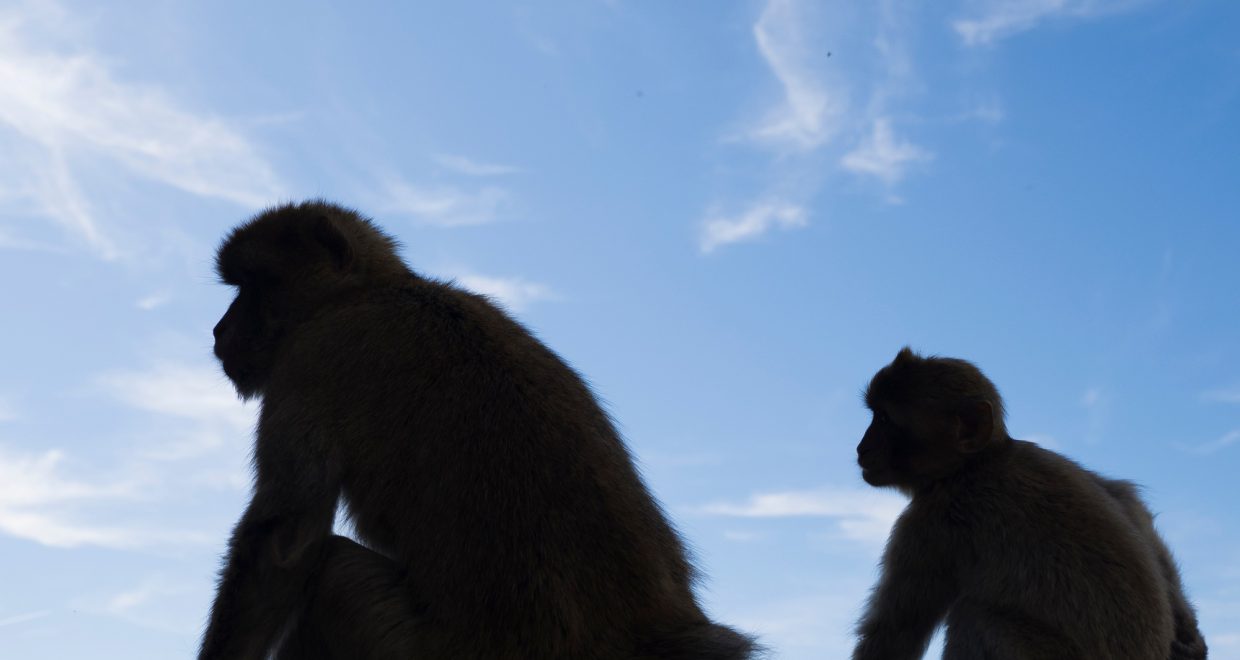Do Apes Have Social Norms?
We humans are funny things, with social norms prescribing action in all kinds of different contexts—norms about how long to hold eye contact, how to defecate, how to use land. There has been much philosophical and psychological effort to try to draw distinctions between types of norms—moral or conventional; social or descriptive—but much less attention on the normative mode of thinking itself. Attending to the nature of normative thinking can help us understand why we have so many norms, and whether we are the only normative species. It can also help us draw better distinctions between norm types, informing more traditional questions.
One strategy for understanding normative cognition is to examine the range of beings who might have norms. At its core, a norm is a behavioral pattern that group members feel they ought to follow. Identifying a behavioral pattern is pretty easy, and patterns are widespread, given recent evidence of cultural transmission via social learning in a variety of species, from rats to dolphins to vervet monkeys and chimpanzees. Evidence that animals feel the force of the norm—have ought-thought—comes from observations that animals make personal sacrifices in order to follow a norm. One example of this can be found in animal immigration, when immigrants give up efficient behaviors in order to conform to the norms of their new group. Like humans who give up their old language, food, or dress when they move to a new culture, animal immigrants have been found to give up their old behaviors in favor of conforming to the new. Sometimes these new behaviors are worse for the individual. For example, vervet monkeys who were raised to eat pink corn and avoid blue corn later immigrated to a community in which only pink corn was eaten and blue corn left untouched. These former blue corn eaters quickly switched to conform to their new group’s behavior, forgoing an easily accessible resource in order to fit into the group. Interestingly, the only monkey who didn’t conform to the new group’s behavior quickly became the new alpha. Chimpanzees immigrants have been observed to substitute their easy-to-find wood hammers for their new community’s harder-to find-stone hammers, even though stone hammers are not better for cracking nuts.
We’re finding that normativity emerges early in child development, too. Preschool children will follow arbitrary norms given to them by researchers, or even made up on the spot with other children, and will protest when the norms are violated. The early acquisition of norms in humans and the presence of norms in other species raise another question—how did we get from this naïve normativity to the sophisticated sort we find in morality and law? To help answer that question, we can look at the psychological capacities that are foundational to normative thinking.
The naïve normativity we see in young children and other animals is supported by a set of four capacities: (1) the ability to identify agents, (2) sensitivity to in-group/out-group differences, (3) the capacity for social learning of group traditions, and (4) responsiveness to appropriateness. Responsiveness to appropriateness can be seen when apes sanction norm violations, such as protesting mishandling of infants, and when immigrants forgo more efficient ways of processing food and conform to the less efficient methods of their new group. Like humans preferring badly made Doc Martins over their familiar sturdy boots, apes seem to jump on the bandwagon and do things because that’s how their new group members do them, not because there are good reasons for doing so.
While there isn’t any evidence that apes have toileting norms (though there are anecdotal reports of apes showing disgust toward feces), there is evidence apes may have other social norms, including land use norms. Field researchers have found that chimpanzees patrol the perimeters of their territories, sometimes crossing into ‘enemy territory’, attacking and occasionally killing males and infants. Successful incursions result in expanded territories and increased food resources—mostly monkeys to hunt. As normativity becomes a topic of interest to field researchers, we may find that apes also have a variety of interesting norms.
While human life is saturated with normativity, what we are learning about other primates suggests that the difference in normativity between humans and other animals one of degree, not a difference in kind. Such observations delight me, and raise a new, tantalizing question—how did our species get from naïve normativity to legal systems and moral philosophy?
Find out more by reading the full article here: ‘Naïve Normativity: The Social Foundation of Moral Cognition’ Kristen Andrews





